

William Stopford
The cars axed in 2025 that we'll miss the most
1 Day Ago
More goodies equal more outlay – but is there enough added goodness in the pricier MY22 Santa Fe Elite V6 FWD to represent improved value?
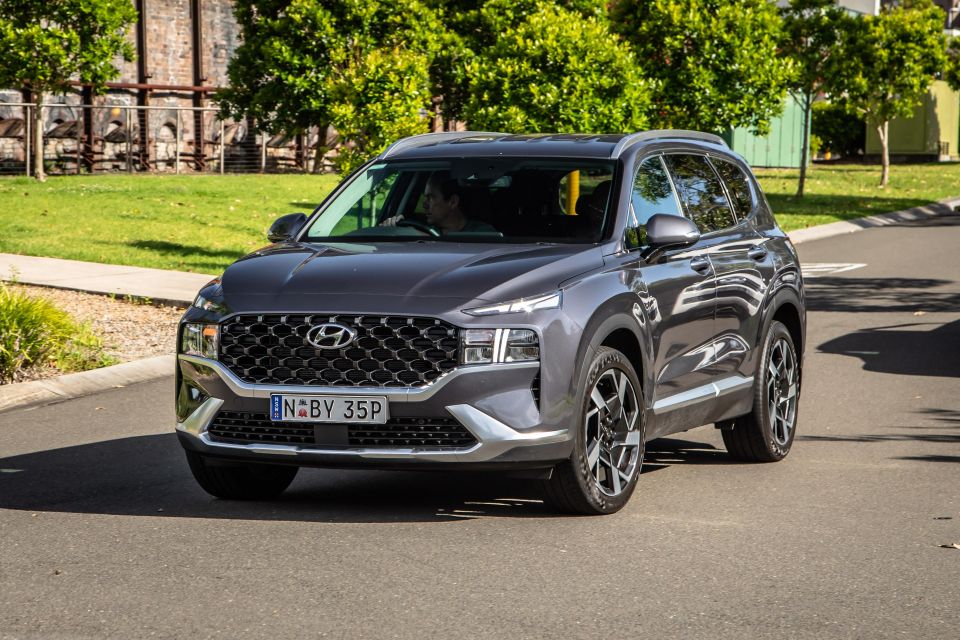
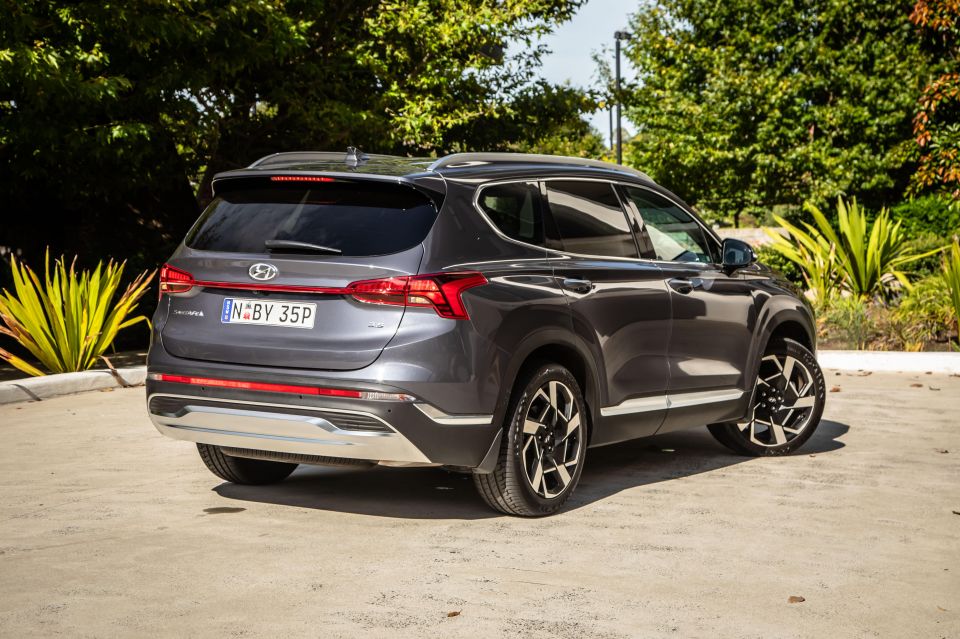

Quickly see how this car stacks up against its competition. Select any benchmark to see more details.
Where expert car reviews meet expert car buying – CarExpert gives you trusted advice, personalised service and real savings on your next new car.
Better things come to those who wait longer, or so the saying doesn’t really go.
The MY21 Hyundai Santa Fe range, launched late 2020, was a major mid-life shake-up rather than your usual nip and tuck facelift affair. We’ve covered off those wider changes elsewhere and it’s well worth a dig around CarExpert for the fuller rundown on differences between early and late-gen spec for the current seven-seat large-SUV line-up.
But there’s more. Fresh off the boat is the MY22 range, complete with a smattering of extra features to push the Elite vibe more upmarket and create more separation from the Active sat below it in Hyundai’s range. Not unexpectedly, prices rose across the eight-strong Santa Fe range for the second time in two years.

On test here is the Santa Fe Elite V6 FWD, ostensibly the range’s lower-rung powertrain topped with high-grade appointments and niceties. It’s arguably not the most lust-worthy variant in range but it could well be the most desirable option for a large slice of prospective SUV owners shopping for a nice balance of seven-seat goodness and value in its segment.
In the Elite V6 FWD’s latest update, some of the evolution is subtle, some of it – interior presentation in particular – is more conspicuous and impactful.
The old version scored a 7.9/10 rating; its highlights including space, equipment and V6 lust. Lowlights are thirst, traction and third-row spatial concerns. Let’s check out how today’s fruiter and pricier version fares.
The Santa Fe Elite 3.5 V6 FWD clocks in at $56,000 plus on-road costs. As covered in our pricing and spec story, the Elite grade has climbed by $1700 in this update, a stiffer increase in outlay than any other Santa Fe variant, all of which bring price hikes of between $850 and $1450.
The broader eight-variant range is essentially a choice of two powertrains – petrol front drive and diesel all-paw drive – in any one of four available variant tiers. Santa Fe kicks off with the base V6 FWD at $45,550 and tops out with the Highlander CRDi (aka diesel AWD) at a far loftier $66,050.
The Elite petrol’s $56k becomes roughly $61k on road before options, and there are a few of them. Five of the seven available colours up the price by $695 and the fetching Elite-exclusive Cognac Brown leather colour scheme, as tested, adds a palatable $295 beyond the regular issue black.
From here, Santa Fe can be juiced up with a number of different (four) exterior and (two) interior bundle packages under the ‘accessories’ banner, the priciest being the near five-grand Urban Edge fit-out. This adds Busan-style black 20-inch alloys shod with Pirelli tyres, tyre pressure monitoring, nudge bar, roof racks and side steps.
The samples Interior Plus pack, at around $1300, brings Neoprene (think wetsuit) seat covers, a dash mat, ‘tailored’ matting and cargo liner. Yep, these are ideally for adventure-loving owner types and perhaps more fittingly applied to diesel AWD versions of the Santa Fe…
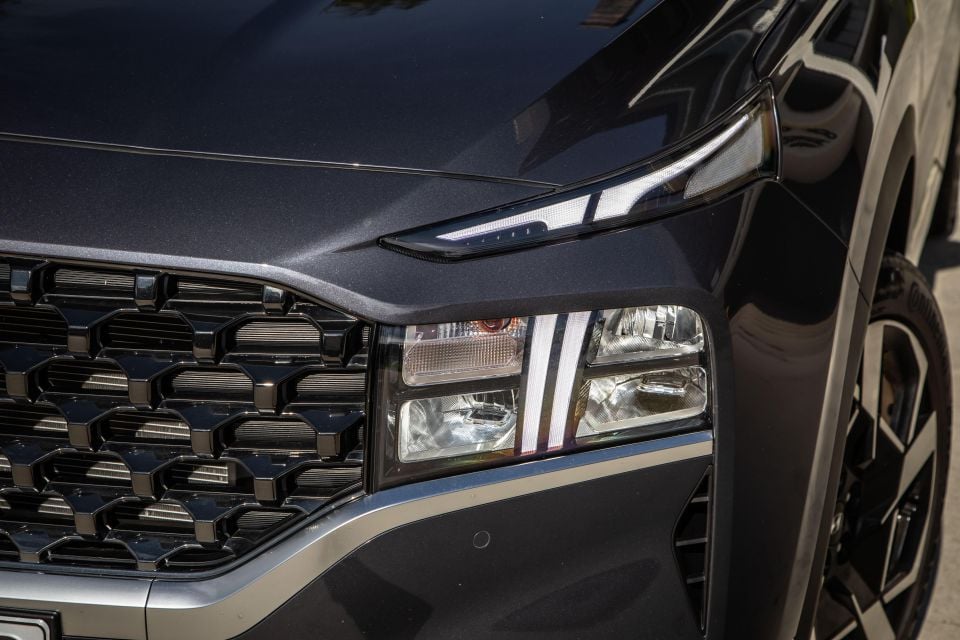
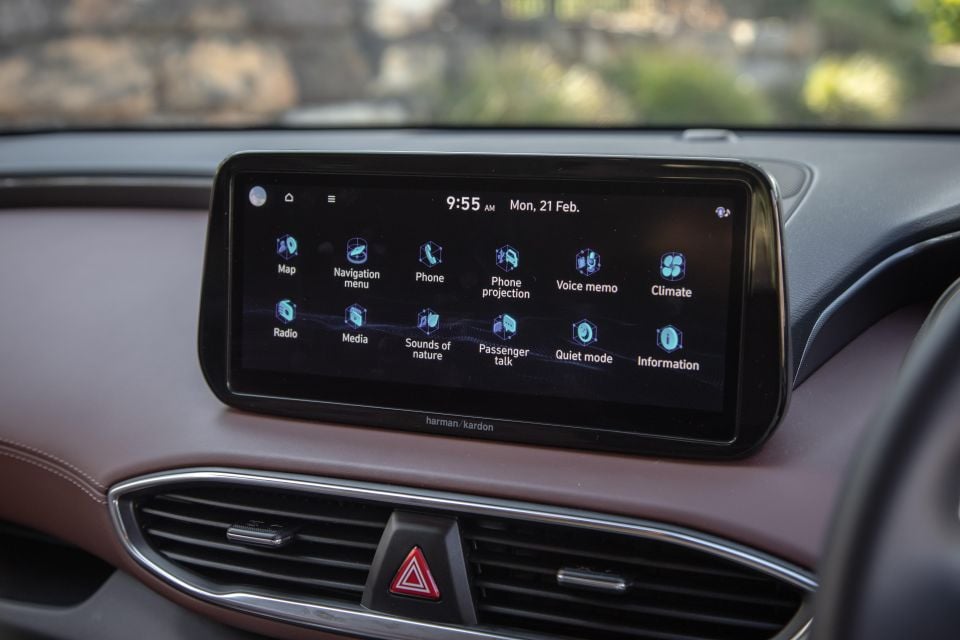
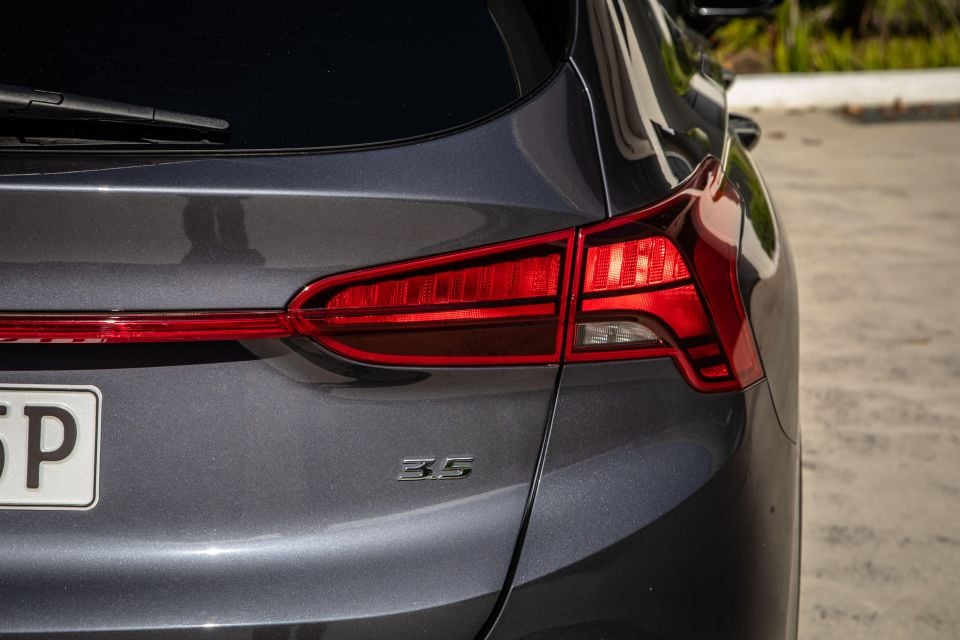
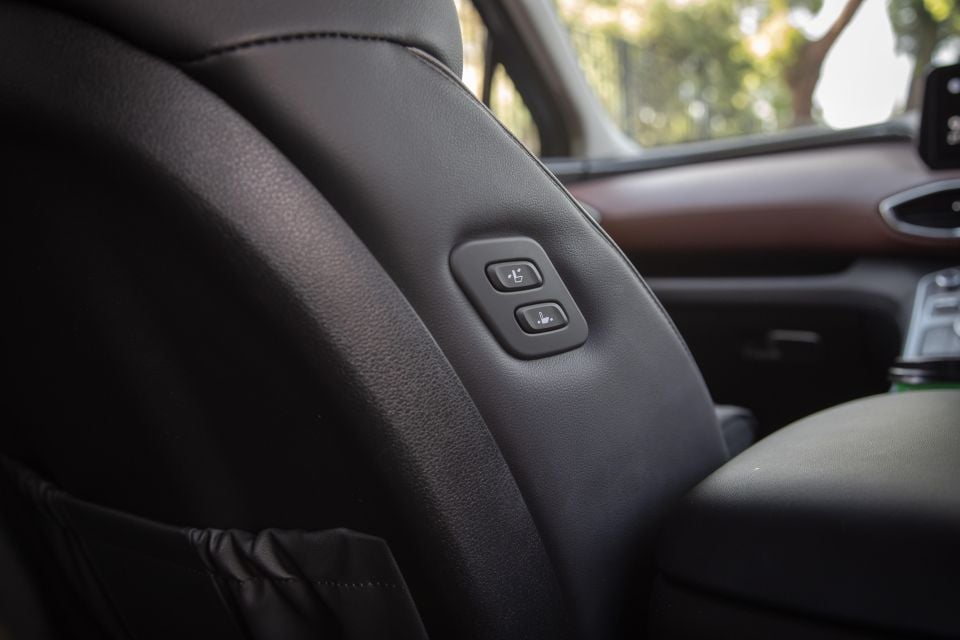
Buy your new car without the stress. It's fast, simple and completely free.

Great service from Travis and team, second time I have used this business would not hesitate to recommend them to anyone
Craig C.
Purchased a Ford Ranger in Sunshine Coast, QLD
CarExpert helped Craig save thousands on his Ford Ranger, now let us save you on your next new car.
Find a dealSo, what’s new with the Santa Fe Elite V6 to justify the extra $1700?
The single most conspicuous is that the Elite has adopted the large 12.3-inch digital instrument cluster trickled down from the Highlander flagship. Lost in transition, though, are the flagship’s blind-spot view monitor camera system and head-up display still only offered at the top of the Santa Fe tree.
Its tail lights are now LED, its front seats are now heated and the third row now features USB power.
The full safety rundown is further below though, as key areas of its value pitch, the Elite (and all other variants) now get a front centre-airbag and multi-collision braking smarts to bolster the safety equipment fit-out.
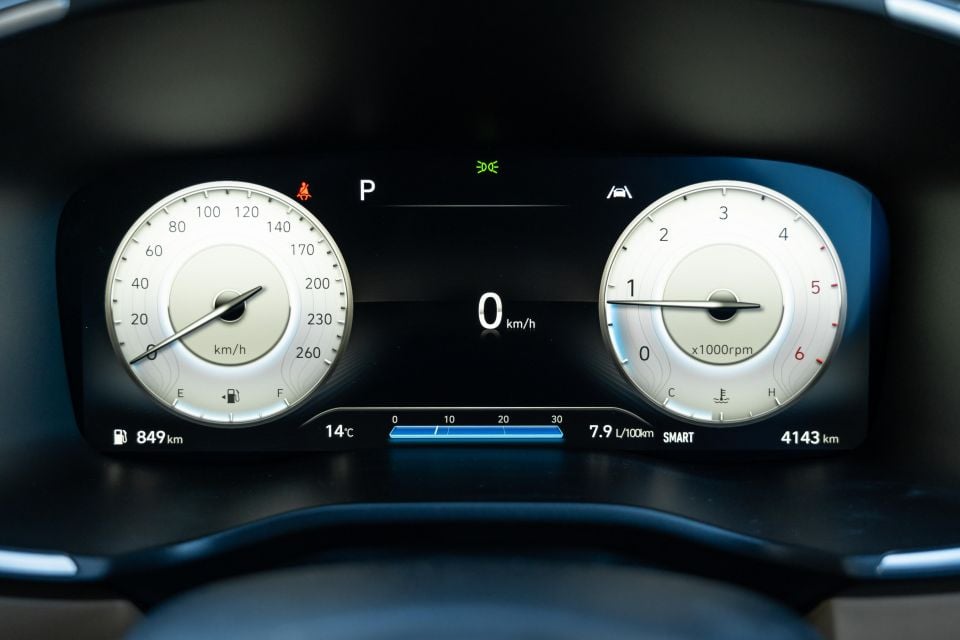
Otherwise, Santa Fe Elite highlights include:

The Elite shares the following with base and Active grades:

The Santa Fe was tested by ANCAP in 2018, receiving a rating of five stars. Despite technical differences under the skin, the new Santa Fe carries over the existing five-star assessment.
Its rating was based on an adult occupant protection score of 94 per cent, child occupant protection of 86 per cent, pedestrian protection of 67 per cent and safety assist of 78 per cent.
All Santa Fe models come standard with:
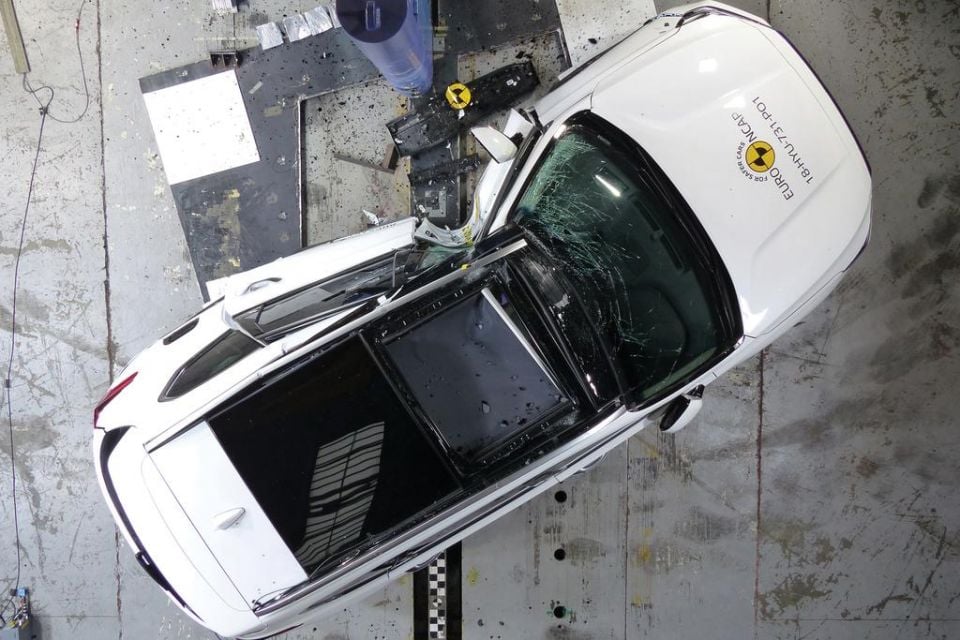
The Elite has radar-based rear occupant alert but lacks some of the features of the range-topping Highlander such as the Blind Spot View Monitor camera system, reverse AEB, and Remote Smart Parking Assist.
All models have front, front-side and curtain airbags plus a centre airbag for the first row, as well as curtain airbags for the second row. While the Santa Fe’s curtain airbags don’t fully extend to the D-pillars, they do cover the window line.
There are no top-tether anchor points in the third row, so the installation of child restraints in row three is “not recommended” according to ANCAP. Stands to reason, too, that small restrained children shouldn’t be out of driver and front passenger sight and reach anyway…

You don’t need eagle eyes to spot the anomaly in our Elite tester: it has analogue gauges. Yes, our sample is of MY21 vintage, pre-12.3-inch digital instrumentation, a system the CarExpert crew is very experienced with. Highlander instrumentation appears in imagery for illustrative purposes.
Still, the MY21 vehicle as tested is ostensibly otherwise current, particularly the vastly remodelled centre console array and fresher infotainment included in the facelifted Santa Fe range. It’s quite a different vibe to the last Santa Fe Elite V6 FWD we reviewed, which was of pre-updated vintage.
So what’s changed? While the core design and dash has carried over, the facelift integrates a larger, bolder and more elaborate central stack and console that replaces the older, simpler, low-profile mechanical transmission selector, phone cubby and cup holder array.
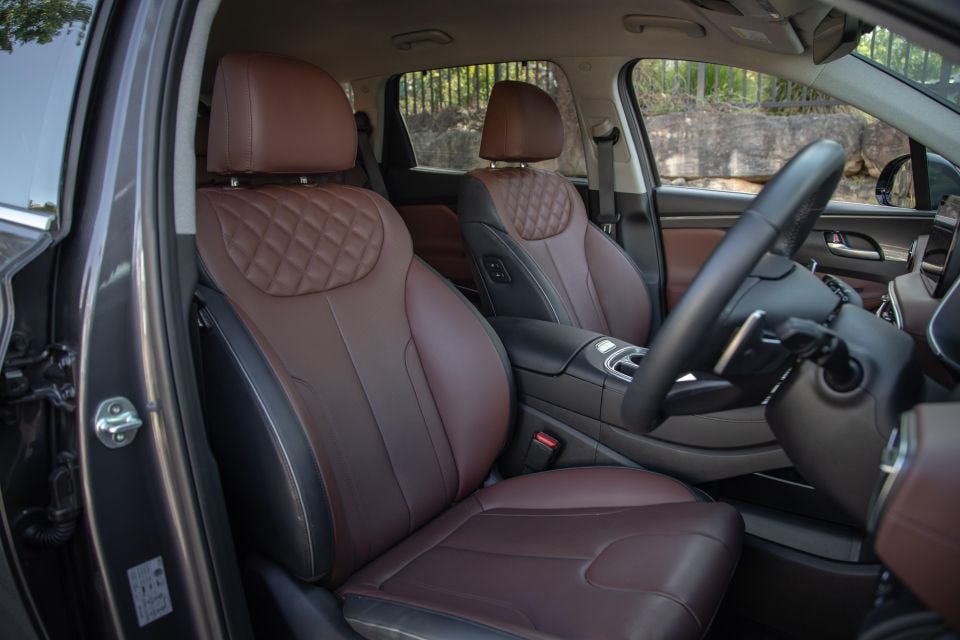
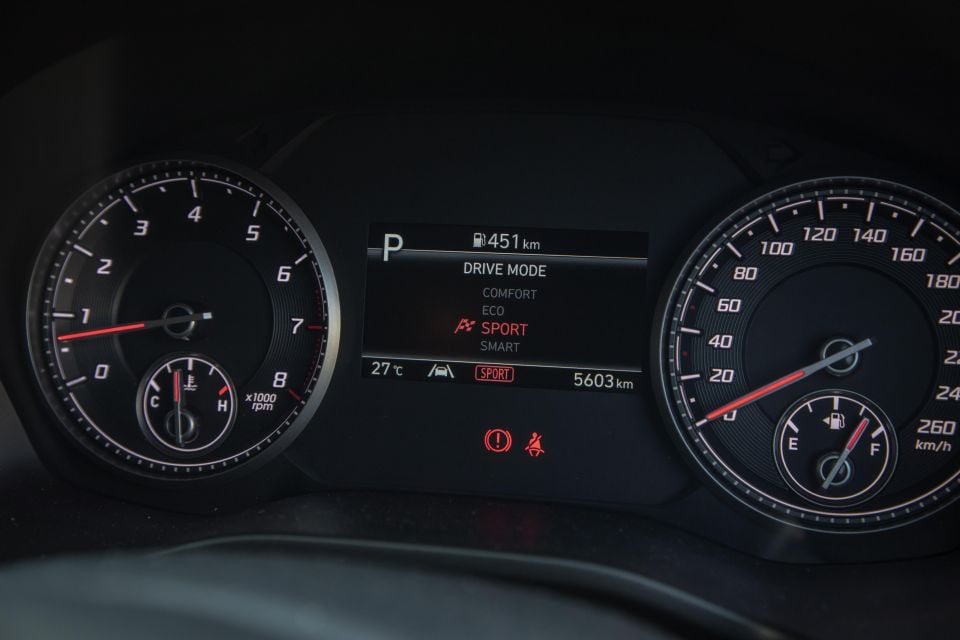
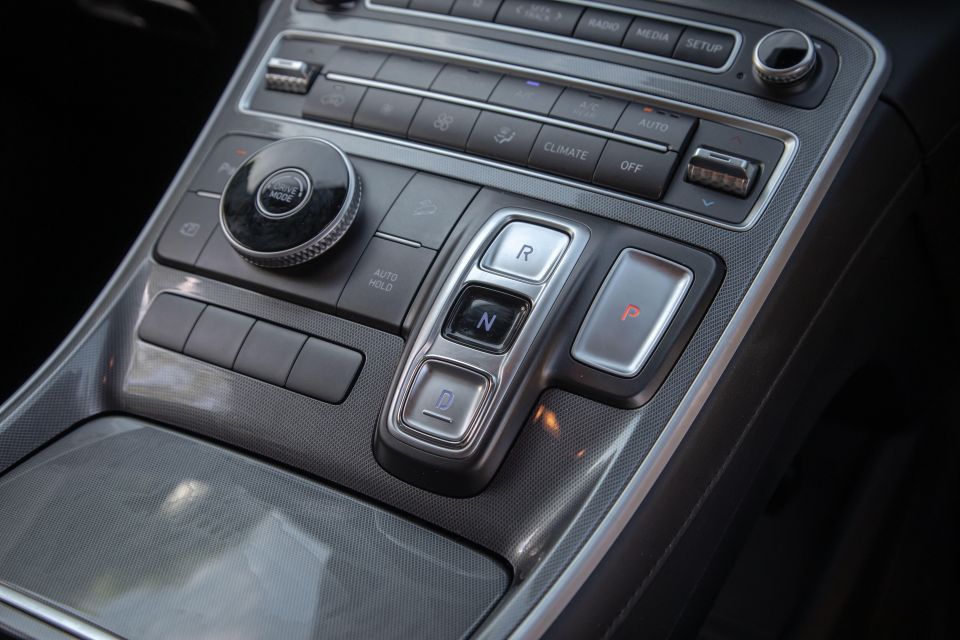

The new push-button selector, while not to everyone’s tastes, brings a techier vibe and the new inductive charge slot, where you secure your phone vertically neatly by the higher of two cup holders, is inspired design. Grouping most of the cabins switches and dials into the single array is convenient, while removing clutter elsewhere in the first row.
Next are the dual displays. The 12.3-inch digital instrumentation brings the big wow-factor, bringing a more contemporary look than outgoing old analogue/TFT cluster and minting a true ‘cockpit’ look. It’s clear, sharp and goes a long way in blurring the demarcation between Elite and the flagship Highlander, apart from the blind-spot camera system.
The newer, sharper 10.25-inch infotainment screen with its slimmer frame also looks and feels classier and more fitting than the old and comparatively clunky large-framed 8.0-inch forebear.
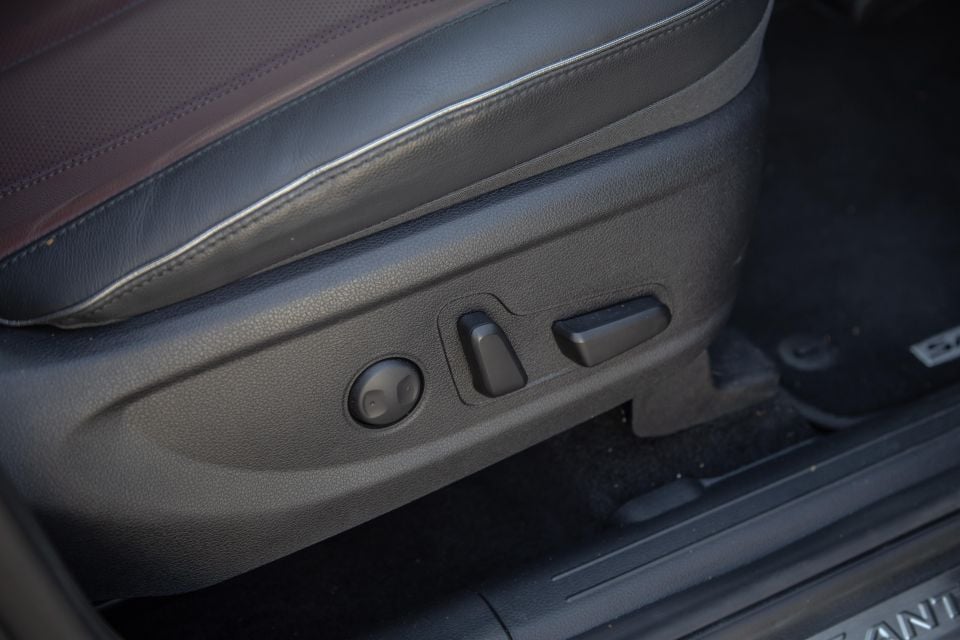
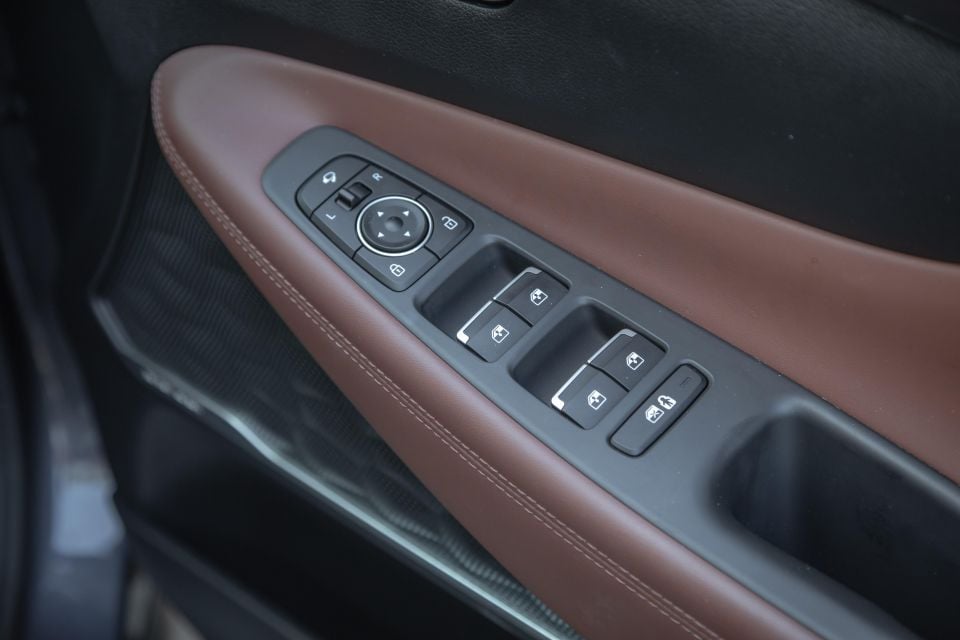
Helping improve cabin ambience is the Cognac Brown option. Compared to the dowdy standard grey-black theme, it is worth every cent of its $295 asking price.
The penultimate Santa Fe really does a great job of blending classiness and functionality. Even the stylised stuff; instrument cowl, air vents, are logical as well as ergonomically and visually sound, while controls are intuitive, convenient and leave little guess work or do not distract, unlike in some premium Euro vehicles.
The seats are also fantastic, very comfy and allow ample (10-way electric) adjustment to help with long hauls. They are shapely and supportive with the Elite fitted with leather trim shared with the Active – but not the higher-grade Nappa stuff used on Highlander. The material used in the Active and Elite seats is at least quite supple and only forensic examination will separate the fake stuff from the genuine.
Unsurprisingly, hard plastics do creep into the mix, though the Korean maker is becoming more adept at blending them inconspicuously into the cabin landscape, keeping much of the shiny stuff below elbow line and out of sight, save for some sections of the door trims. Dig about and there’s plenty of smartly executed storage, the only real annoyance being the two-tier central cup holders that countersink smaller/shorter drinking receptacles too deeply. Nitpicking, right?
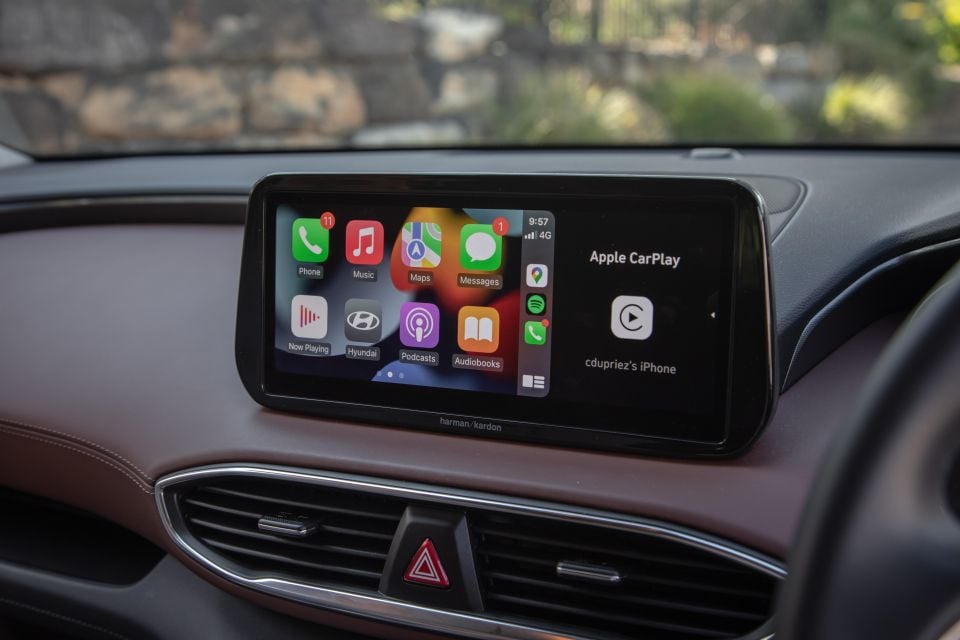
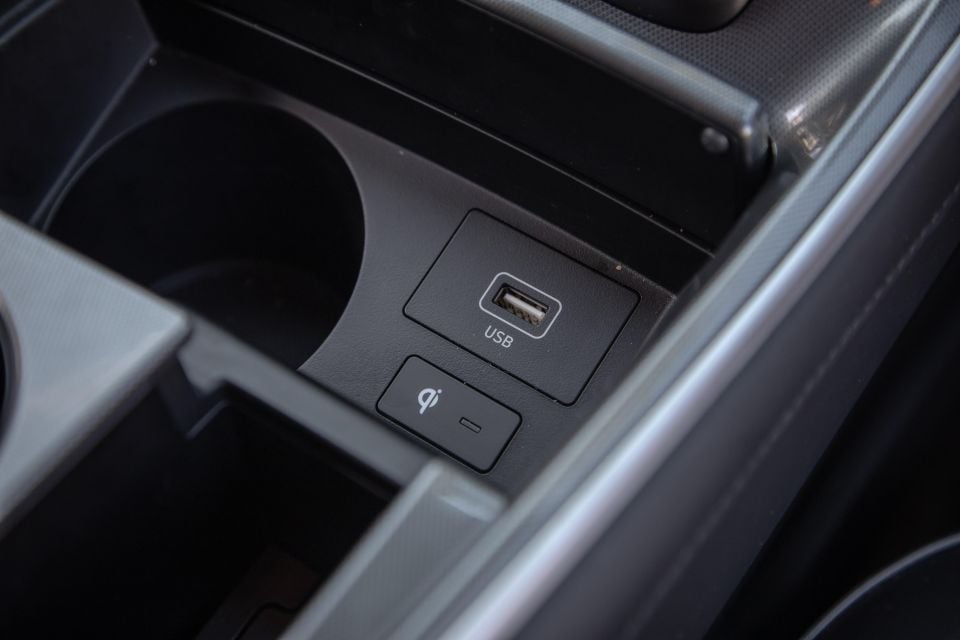
Hyundai (and Kia) have settled in nicely with this 10.25-inch touchscreen system and for good reasons. It’s neat, sharp, pleasingly colourful and relatively uncomplicated, and the quality Harman/Kardon sound is nice icing indeed.
Its base-covering features set offers DAB+, decent proprietary sat-nav and the gimmicky ‘Sounds Of Nature’. At one point I swear some faceless children were laughing at me, piped through a number of the system’s 10 audio speakers…
Thing is, Apple and Android smartphone mirroring is wired. The USB-A data port is right by the inductive charge slot, strewing messy cabling across the console top.
You can place your phone in the handy ‘second tier’ tray compartment down at shin height – complete with USB-A and 12-volt power – but it’s less than elegant. Ideally, inductive charging and wireless phone mirroring would be a cleaner solution.
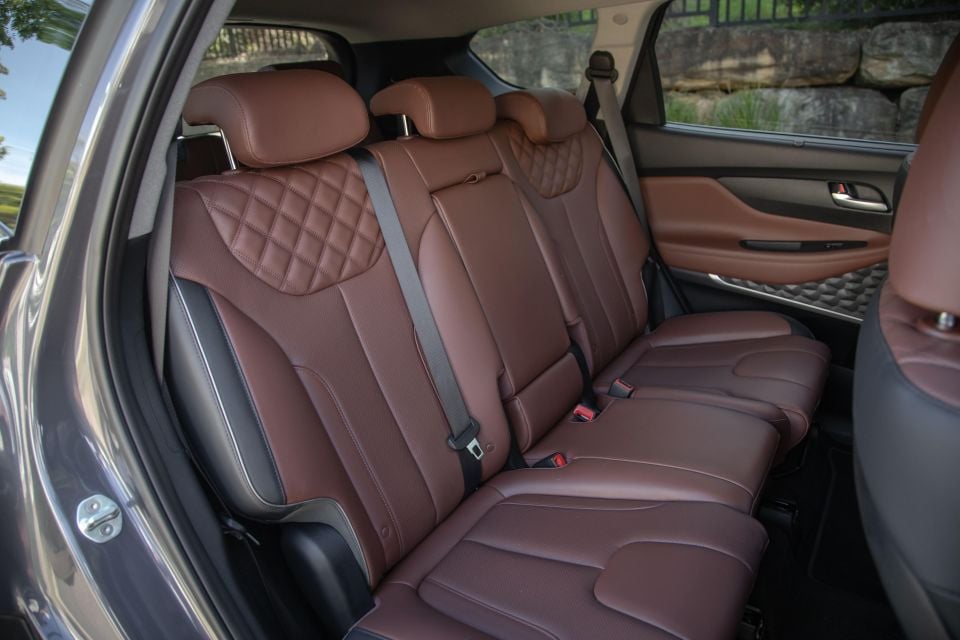
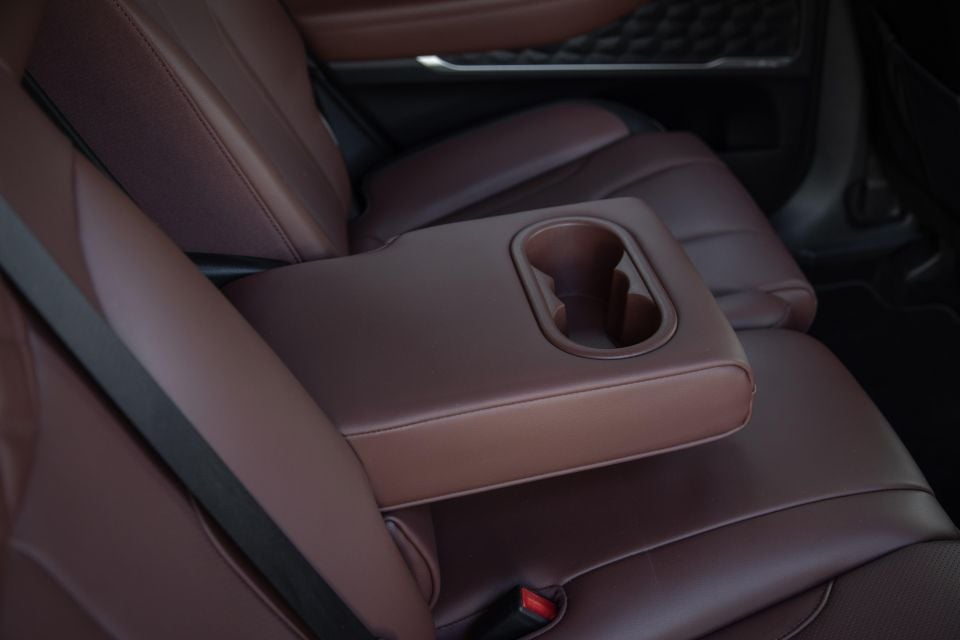

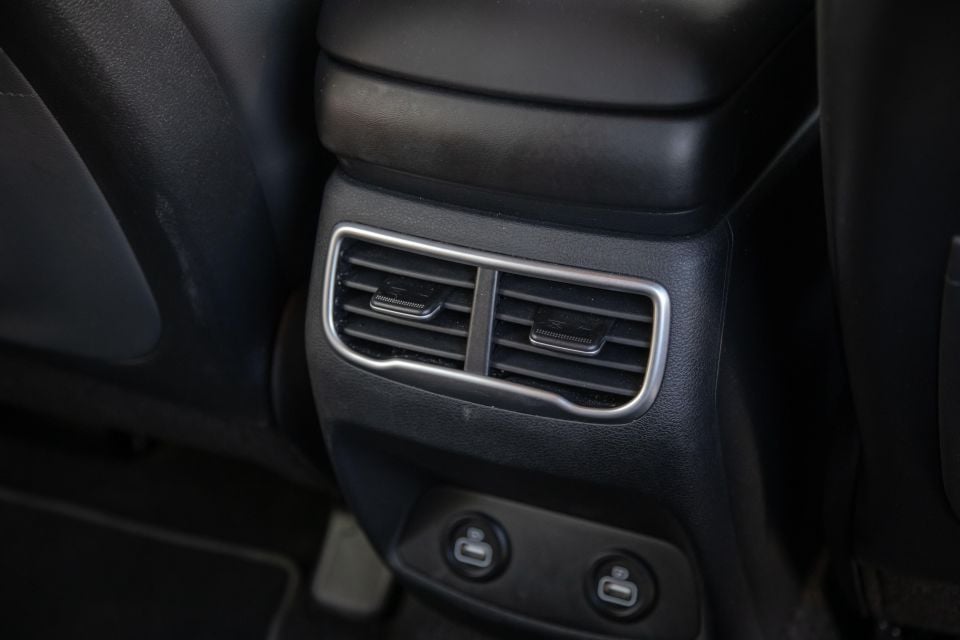
Rear space is fantastic, with an airy ambience and heaps of head and legroom for larger second row occupants. As a four- or five-seater, there’s excellent long-haul touring potential, as you extend the row two bench rearward while still maintaining exceptional 571-litre boot space.
Row three is stowed more or less flush into the luggage space floor. Air vents and USB device power cover essential second-row bases, while retractable blinds boost the Elite’s family friendliness for hauling youngsters who like to sleep on the move.
Rear-seat slide functionality allows you to tailor leg space when the third row of seating is in play and rearmost space is acceptable, if better-suited to kids rather than adults or those adult sized.
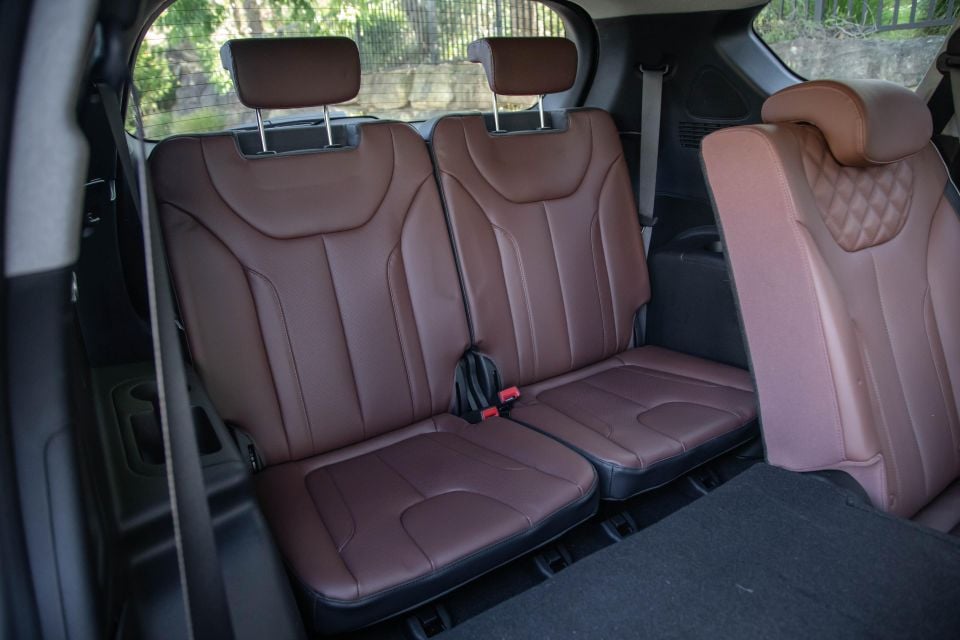
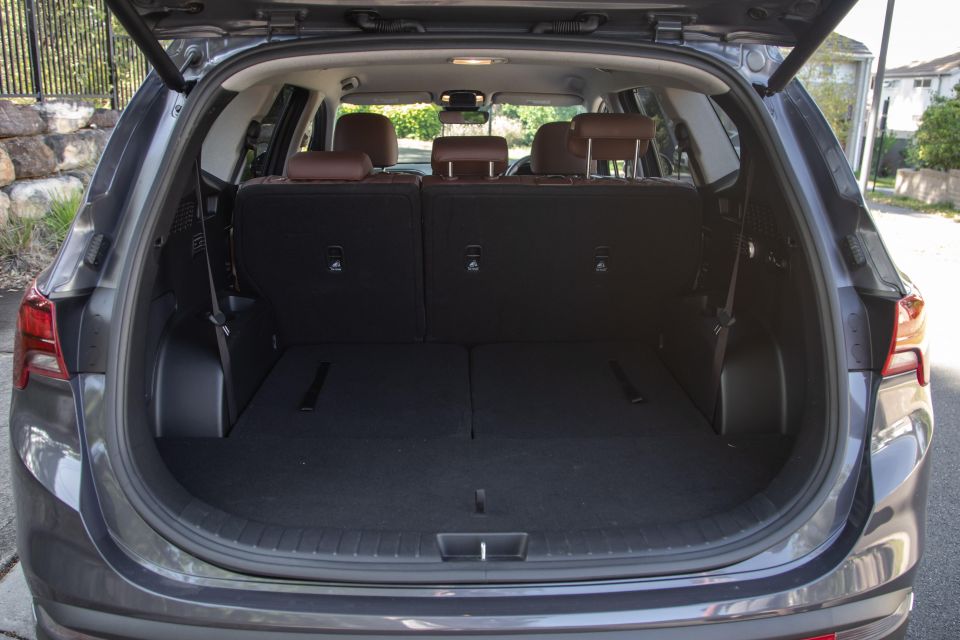
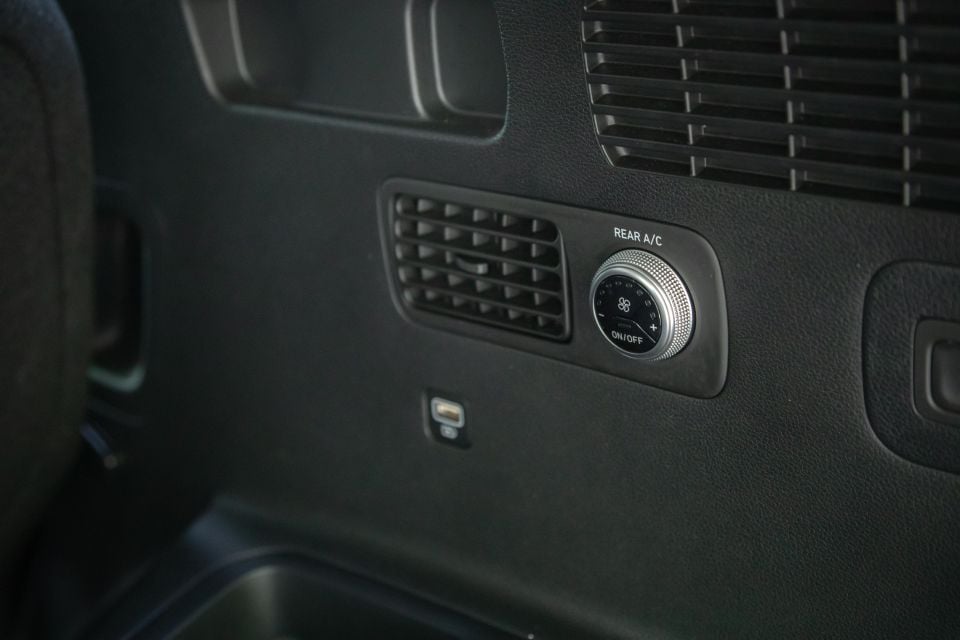
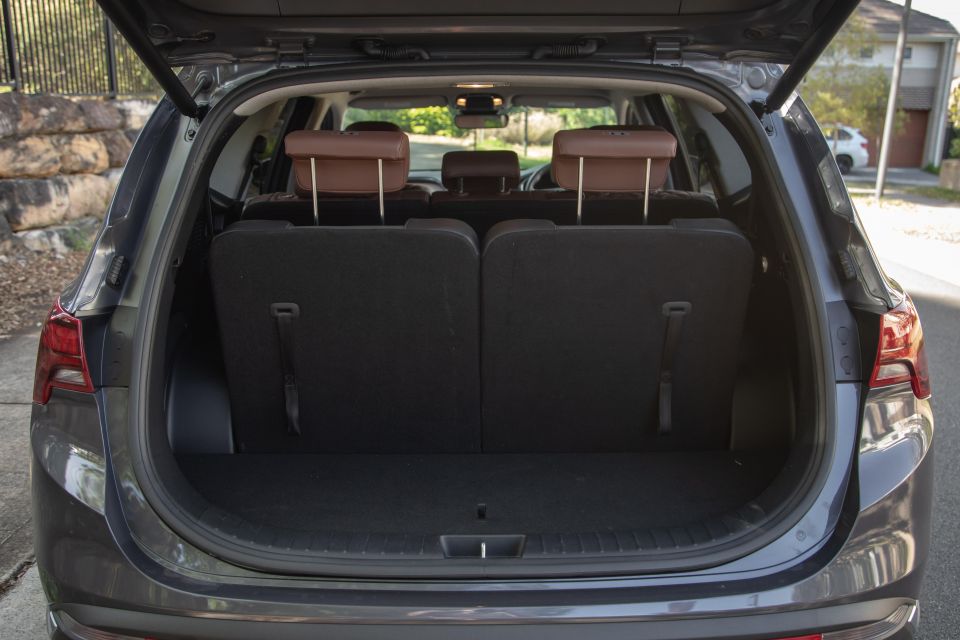
Still, the MY22 update has added USB power to the rearmost accommodation, which carries over third-row cupholder and air vents, so there’s little to complain about bar the slightly tight room.
It’s good thing Hyundai offers a more spacious Palisade then, albeit in base guise (from $55,700) for the sort of coin the Santa Fe Elite commands.
Luggage, cargo or groceries, the full seven-seat configuration brings a scant 130 litres of storage space, though it’s more usable than the figure suggests. As a five-seater, that grows to 571L and can expand when required to a more fulsome 782L with row two slid forward.
Converted to a two-seat surrogate furniture hauler, the Santa Fe offers a huge 1649L, if with the load floor that is ‘flattish’ rather than properly horizontal.
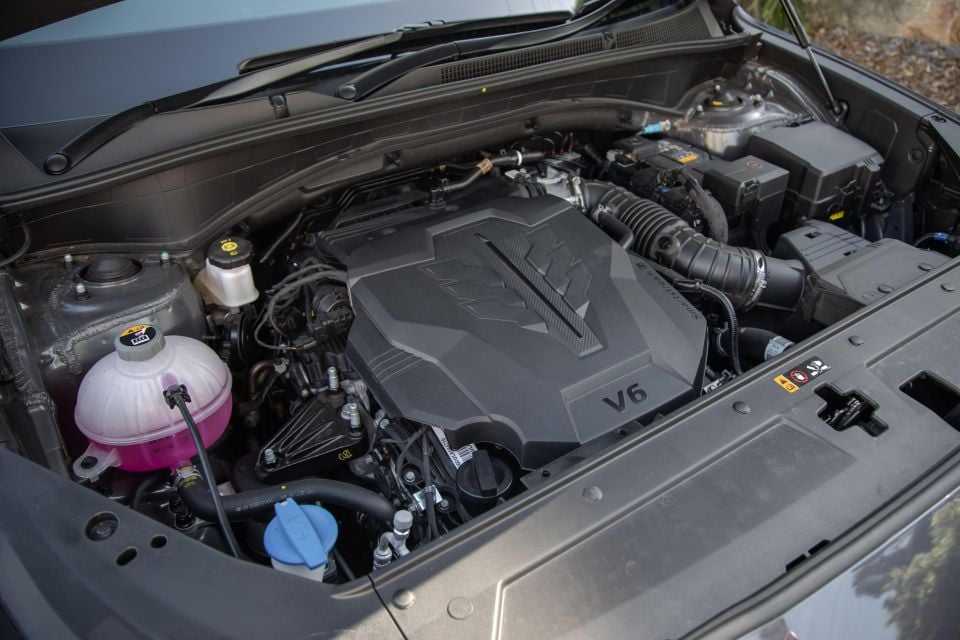
Where expert car reviews meet expert car buying – CarExpert gives you trusted advice, personalised service and real savings on your next new car.
The Elite’s 3.5-litre naturally-aspirated petrol V6 is a more fitting and effective engine than the four-cylinder petrol it recently supplanted. It produces 200kW and 331Nm, that latter way up in the rev range at 5000rpm.
Trainspotters will notice that older versions of the V6 were at times quoted as offering 6kW and 5Nm more output. Apparently in retuning the engine for its facelift, there has been a small hit to the specification sheet.
The engine in this model brings a 52kW advantage, if with a deficit in all-important torque, the petrol doling out 109Nm less than the 2.2-litre turbo-diesel four.

The petrol Hyundai uses an eight-speed torque converter automatic to the front wheels, whereas the oiler adopts an eight-speed wet-type dual-clutch and on-demand all-wheel drive. All-paw traction is offered with petrol versions in overseas markets though it’s not offered locally due to issues with right-hook packaging.
The good news is that the petrol runs happily on basic 91 RON or E10. Less good is that, at 10.5L/100km claimed combined, it likes to drink a lot of it. The diesel, by comparison, is rated at 6.1L/100km. The fuel tank is 67 litres.
Braked towing is a fairly handy 2500kg, with a typical 750kg rating unbraked.

As a diesel sympathiser, particularly of the smooth and relatively quiet Korean vehicles, the petrol six wouldn’t be my personal pick. Overall though, the big V6 is up to the job prescribed and there aren’t many shortcomings beyond the 3.5L unit’s thirst and the running gear serving it downstream.
Response wise, it’s quite peaky and alert off idle, which can demand more concentrated throttle modulation than is necessary. It has ample shove and it’s surprisingly ‘toey’ around the 3000rpm mark, well below its advertised maximum torque sweet spot.
I didn’t experience some of the traction issues my colleagues have had assessing this particular Santa Fe powertrain combination – from a standstill, out of corners – but that could be down to a combination of wet weather testing (none) and the number of years I’ve accumulated in my lifetime (lots).
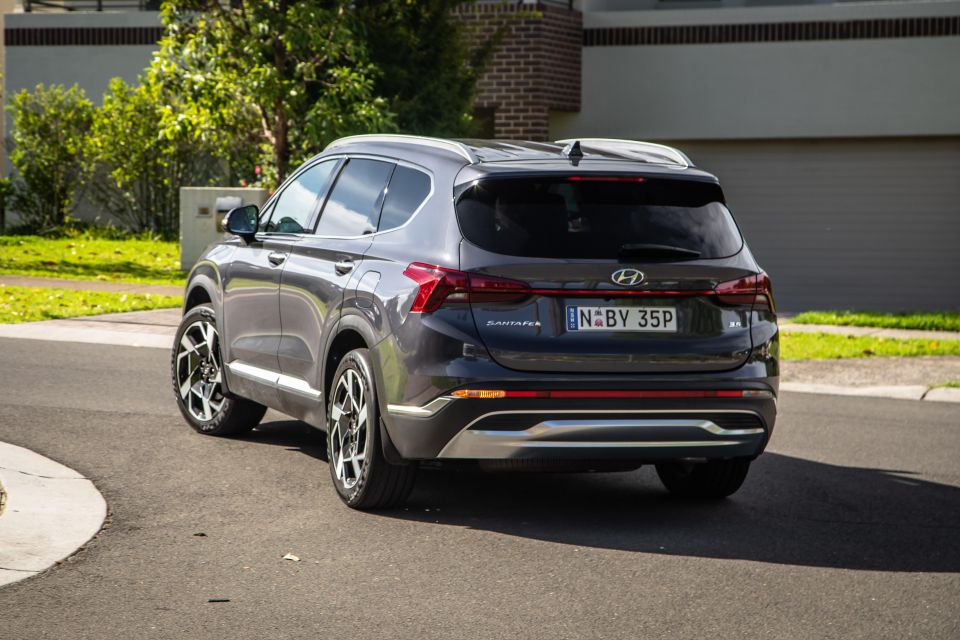
The engine and transmission marriage is generally harmonious and the driving experience is quite resolved, with my preferred mode being ‘Comfort’. However, I did notice a pause in the second-to-third-ratio upshift, which did start to become tiresome at the end of my week-long custodianship of the Elite.
Sport mode, for its part, certainly doesn’t dull throttle inputs, but it does slightly ruffle the Santa Fe’s smooth sailing nature and adds some unnecessary weight to steering that’s already moderately weighted. It’s just not warranted nor necessary. There’s no torque steer as far as I can tell, and this seems to ring true in wet running during prior reviewing of the base V6 FWD version.
As I’ve observed in the past, the ride is well-damped, if erring on the firm side. There’s plenty of taut body control, but potholes and square edged speed bumps do cause the Elite’s suspension to jolt across both axles and with a surprising amount of noise.
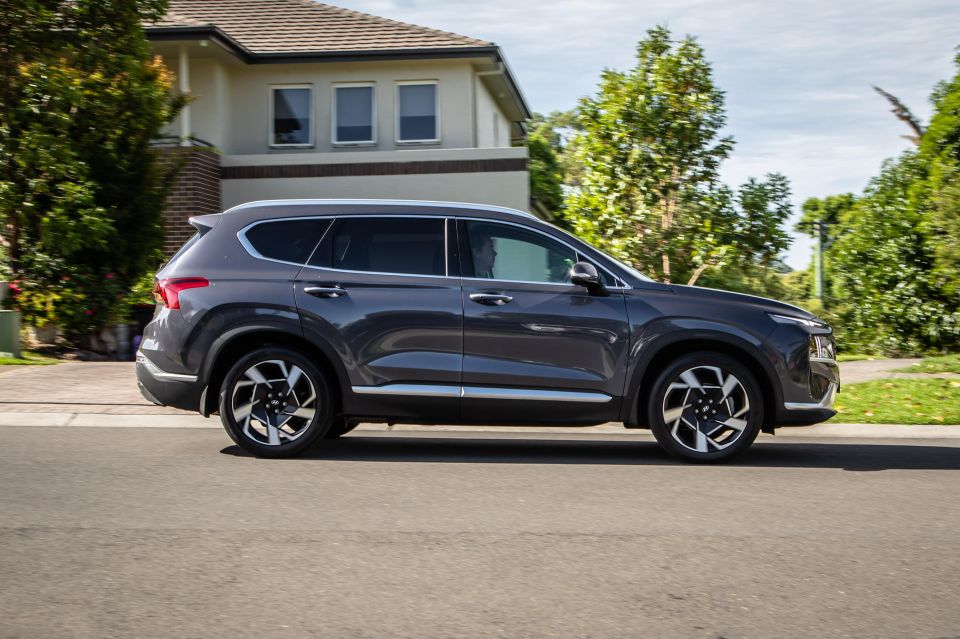
The Santa Fe does; however, settle very nicely and quietly across less-challenged road surfaces, its manner equally pleasant punting around urban back streets or out on the open road. There’s some tyre and wind noise at speed and across some surfaces, though no worse than most of its segment competitors.
The absence of the Blind Spot View Monitor or 360-degree camera systems offered in the top-of-the-range Highlander doesn’t really impinge the Elite’s user-friendliness or the ease in which it negotiates parking spaces and tight gaps. The suite of sensors, decent reversing camera and good, old-school wing mirrors all bring enough guidance.
We’ve praised the lane-keeping and lane following smarts before, but your author’s take is that the ‘keeping’ stuff is too enthusiastic at lower speeds around the haphazard urban Sydney environment. It’s less handy here than it is on the open road. All, thankfully, are easy to switch off.
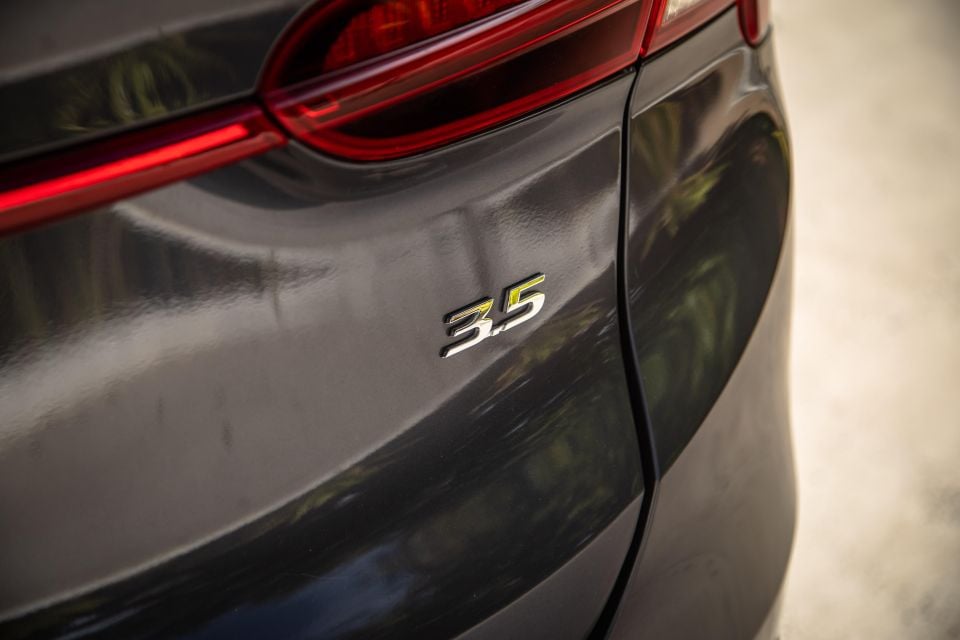
Hyundai’s five-year, unlimited-kilometre warranty is solid, if still two years short of its Korean cousin – Kia.
Servicing is every 12 months or 15,000kms. The best value is with paid upfront Standard Plan servicing packages, available at $1197 for three years/45,000km, $1596 for four years/60,000km and $1995 for five years/75,000km.
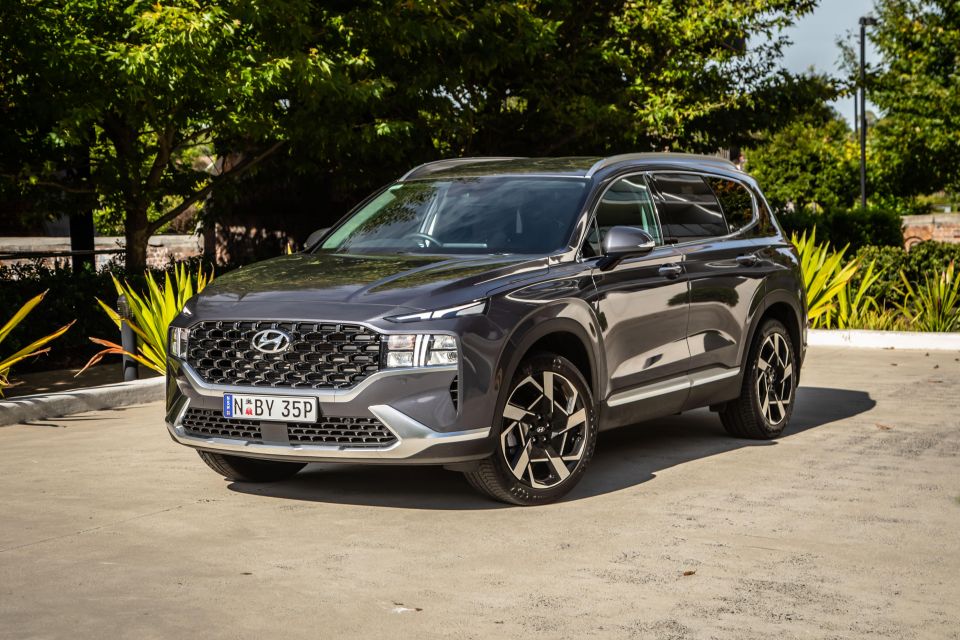
The Santa Fe Elite was always a nice enough machine. It was also a nice $51,500 machine last time we tested one, just 18 months and two effective updates ago. In its presentation and feel-good vibe, it felt more pedestrian inside than its stylish exterior design promised.
It’s now $5500 pricier – again, post two updates – than the last time this particular trim level swung through the CarExpert garage. It does make a richer impression, if mostly in window dressing and design changes, to a point where that roughly 10-per cent inflation seems justified.
At $56k, the petrol V6 front-driver powertrain is certainly adequate, but it’s hard to drum up more enthusiasm. At least it’ll fit well with most buyers most of the time.
The diesel substitute is the nicer option and my preferred drive. However, you’ll need to pry the wallet open wider by $3500 to step up. Regardless though, many buyers just prefer the petrol option, full stop.
Whichever your fuel preference, our advice to those with a Highlander taste and budget, is to at least give the Elite-grade Santa Fe a whirl. You might be surprised at how lush the penultimate version can be, and save some of your hard-earned money too.
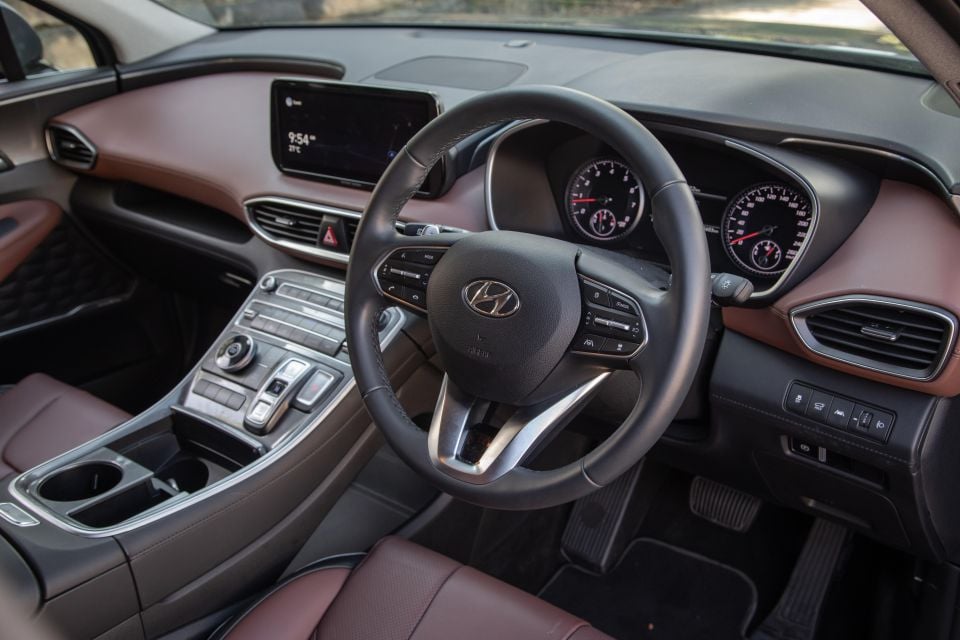
Click the images for the full gallery
Where expert car reviews meet expert car buying – CarExpert gives you trusted advice, personalised service and real savings on your next new car.


William Stopford
1 Day Ago


Matt Campbell
1 Day Ago


William Stopford
2 Days Ago


CarExpert.com.au
5 Days Ago


Max Davies
6 Days Ago


Damion Smy
7 Days Ago